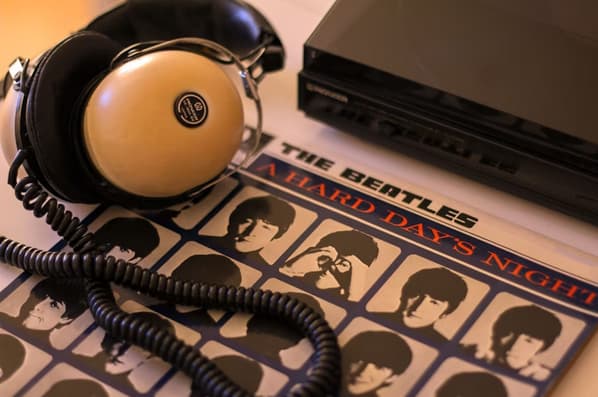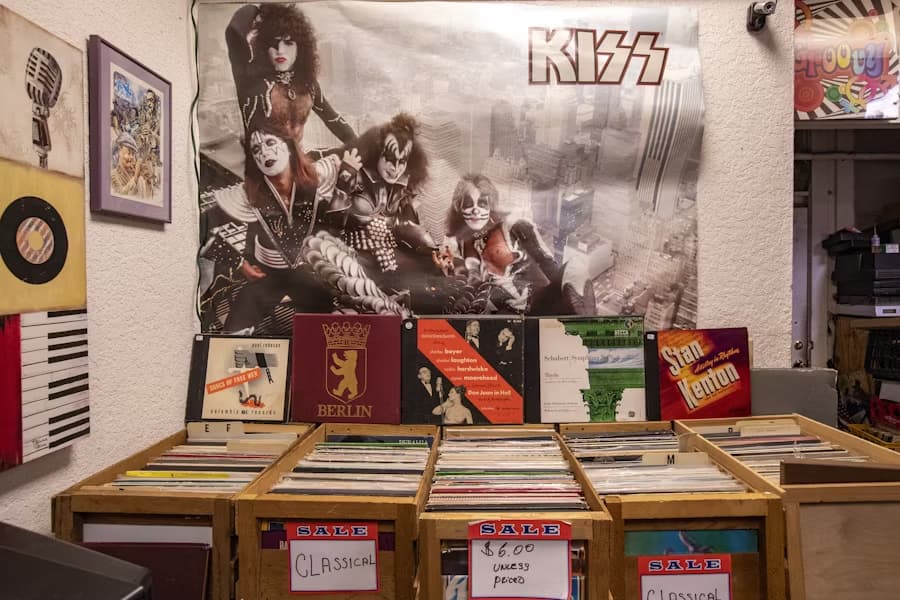Rock as a genre has always been in flux. While in the 1960s and 70s it was the voice of youth protests and a symbol of cultural upheaval, today it has become much more multilayered and diverse. When comparing classic and modern rock, it is important to understand not only the musical differences, but also how the role of music in society has changed.
Below we will look at key aspects that will help us to see clearly how the two periods differ from each other.
Sound and instruments
One of the most obvious differences between eras is the way music sounds.
Classic rock
- Instruments: guitar, bass, drums, vocals. These instruments created the basis for a “live” sound, where each part had its own place and was easily distinguishable.
- The sound: analog, live, with natural distortions of amplifiers. This approach made the recordings less “clean”, but that was their strength and authenticity.
- Special feature: emphasis on riffs and guitar solos. The guitar solo was considered the pinnacle of the composition, a demonstration of the musician’s skill and emotion.
- Example: Led Zeppelin’s “Whole Lotta Love” or Deep Purple’s “Smoke on the Water”. These songs became symbols of the era, their riffs are still recognizable from the first notes.
Classic rock was perceived as “honest” music: the musicians went on stage, turned on the equipment, and that’s how most albums were recorded. Minimal processing, maximum energy.
Modern rock
- Instruments: synthesizers, electronic drums, sequencers were added to the standard ones. This allowed for a wider range of sounds and experimentation with new forms.
- Sound: digital, layered, often using studio effects. Thanks to technology, producers can control dynamics and balance so that every detail sounds perfect.
- Feature: attention to the overall atmosphere of the track, not just the guitar parts. The music is built around a holistic sound, where vocals, rhythm and effects create a unified emotional picture.
- Example: Muse with their combination of rock and electronics or Imagine Dragons with their powerful electronic rhythms. These bands show that modern rock can seamlessly combine live instruments and digital technology.
Comparative table
| Characterization | Classic rock | Modern rock |
| Main instruments | Guitar, bass, drums, vocals | Plus synthesizers, electronics, samples |
| Sound | Analog, raw, energetic. | Digital, calibrated, voluminous |
| Emphasis | Riffs, solos, improvisation | Atmosphere, effects, production |
| Approach | Simplicity and energy | Experimental and hybrid |
Subject matter and cultural role
Rock has always been more than just music. It reflected the values and experiences of its time.
Classic rock
- Main themes: freedom, protest, love, social injustice. These ideas reflected the spirit of the times and helped music to become an instrument of social change.
- Role in society: a symbol of the counterculture. Rock united young people who sought to oppose established norms and authorities.
- Cultural context: Vietnam War, hippies, human rights movement. Music served as a platform for expressing dissatisfaction with politics and fighting for new values.
- Examples: The Beatles (“Revolution”), Bob Dylan (“Blowin’ in the Wind”), Pink Floyd (“Another Brick in the Wall”). These songs became not just hits, but anthems of generations and symbols of protest against the system.
For listeners, it was not only music, but also a manifesto. Rockers became the mouthpiece of a whole generation.
Modern rock
- Main themes: personal experiences, technology, existential questions, social networks, identity.
- Role in society: no longer a single protest, but rather a multi-voice – each sub-genre reflects its own audience.
- Examples: Linkin Park (“Numb”) – themes of internal struggle; Arctic Monkeys (“Do I Wanna Know?”) – personal relationships; Bring Me The Horizon (“Parasite Eve”) – anxieties of the digital age.
Distinction by subject matter
| Aspect | Classic rock | Modern rock |
| Main idea | Rebellion and freedom | Self-expression and inner conflicts |
| Sociality | Collective protest | Individual reflection |
| Context | Cultural revolution of the 60s and 70s | Globalization, digital reality |
Genre evolution
Music never stands still, and rock has become a great example of how a genre can sprawl in all directions.
Classic foundation
- Founders: The Beatles, Rolling Stones, The Doors, Led Zeppelin, Queen. These bands set the canon of sound and demonstrated that rock could be both mass and intellectual art.
- Roots: blues, jazz, psychedelic. It was from these directions that rock drew its rhythms, harmonies and improvisational elements.
- Character: each band looked for new techniques, but stayed within the framework of the guitar sound. They experimented with arrangements and lyrics, but the electric guitar and live performance remained the “heart”.
Modern Palette
- Alternative rock – Radiohead, Coldplay. These bands proved that rock can combine intelligent lyrics and unconventional sound solutions with widespread popularity.
- Grunge – Nirvana, Pearl Jam. The genre became the voice of the 1990s, expressing the apathy and protest of youth in a harsh and gloomy form.
- Indie – Arctic Monkeys, The Strokes. Musicians staked on independence from mainstream labels and emphasized the value of “home” sound.
- Fusion with pop and electronica – Imagine Dragons, 30 Seconds to Mars. These bands showed that rock can successfully compete in the charts using modern trends.
- Post-rock – Mogwai, Sigur Rós. The sub-genre focuses on creating atmospheres and soundscapes where melody is relegated to the background.
Thus, modern rock is no longer a single style, but a network of subgenres that often overlap and mutually influence each other.

Concerts and audience interaction
Live performances have always been an important part of rock. But the format of concerts has changed as much as the music itself.
Classic rock concerts
- The atmosphere of festivity and unity.
- A minimum of special effects, a maximum of “live” energy.
- The stage as a sacred space: the audience listened and the musicians gave themselves completely.
- Example: Woodstock 1969 – 400 thousand spectators, a symbol of freedom and cultural revolution.
Concerts of modern rock
- Use of video projections, light shows, AR-technologies.
- Live broadcasting in social networks, interactivity with the audience through screens.
- The show turns into a multimedia action.
- Example: Muse with their grandiose 3D installations or Rammstein with pyrotechnic shows.
Comparison
| Factor | Classic rock | Modern rock |
| Interaction | Direct, live | Often through technology and social media |
| Show | Minimum special effects | Maximum multimedia and visual dynamics |
| Energy | Improvisation, drive | Planned performance |
